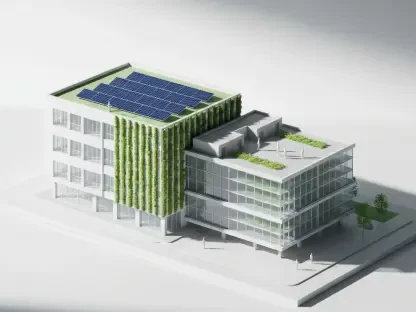Amidst the bustling progress of urban renewal initiatives, a momentous project is transforming the Ottawa landscape, merging sustainable architecture with broader eco-friendly ambitions. Plans for a new Ottawa Senators arena at LeBreton Flats showcase aspirations to transcend traditional infrastructure. Spearheaded by Capital Sports Development Inc., in collaboration with the National Capital Commission (NCC), the project promises more than just a modern facility for sports and entertainment. It aims to serve as an exemplar of green urban planning, setting new standards for sustainable living environments. These ambitions align with an increasing global push toward climate-conscious development, further bolstered by societal demands for cleaner, healthier cities. Central to this venture is the prioritization of alternative transportation, drastically reducing reliance on automobiles. Incorporating cutting-edge eco-friendly building standards, the initiative not only highlights innovative design but also reflects a more extensive commitment to minimizing the environmental footprint. Future implications suggest a transformative shift in urban development ethos.
The Emerging Hub of Green Urbanism
In the heart of Ottawa’s transformative journey stands the LeBreton Flats project, poised to encapsulate a modern hub integrating sports, entertainment, and sustainable living. The venue will prioritize public transit, cycling, and pedestrian pathways over conventional automobile use, reflecting a deliberate effort to echo global trends in reducing carbon emissions and promoting healthier lifestyle options. This urban shift is emblematic of a broader movement toward environmentally responsible infrastructure that encourages active transportation. As one of the project’s most significant elements, the development of publicly accessible bridges for pedestrians and cyclists will enhance connectivity with adjacent neighborhoods, facilitating easy and eco-friendly access to the venue. These bridges promise to increase community engagement by linking people not only to major sports events but also to concerts and various cultural happenings. This infrastructure emphasizes the pivotal role of bridging community and culture with cutting-edge architecture, underscoring the progression toward active and inclusive urban spaces.
Zero carbon building standards also mark the core of this ambitious venture. Such standards are pivotal in aligning with worldwide efforts to curb greenhouse gas emissions tied to construction activities. By employing energy-efficient techniques and materials, this project differently informs and reshapes the narrative surrounding urban architectural norms. Integrating these building practices promises to reshape the standard methodology in urban spaces, where sustainable development practices were previously an exception. By leveraging energy-saving technologies and reducing the carbon footprint, the arena promises to be a flagship model of green urban planning. These initiatives reflect the changing tide in construction philosophies toward climate-positive development, underpinning the NCC’s and Capital Sports Development Inc.’s commitment to ecological mindfulness as a primary tenet.
Integration With Modern Solutions
One of the challenges that the new arena addresses is integration with Ottawa’s existing light-rail transit system, reflecting the broader discourse on how modern urban centers evolve while prioritizing sustainability. Although the light-rail system has faced its share of operational issues, plans have been set in motion to resolve these concerns in time for the arena’s opening. Seamless integration with public transportation systems is critical not only for easing congestion but also for reducing emissions and enhancing accessibility across diverse demographics. This approach aligns with emerging urban lifestyle ideals where dependency on automobiles is gradually minimized. The project is a testament to an era of transformation marked by shifts in public policy and community aspirations prioritizing greater connectivity and sustainable living.
The responsibilities of Capital Sports Development Inc. extend beyond arena construction, including the tasks of land excavation and decontamination. Such measures underscore an emphasis on responsible land stewardship, ensuring the initiative’s environmental impacts are minimized while enhancing surrounding ecosystems. This commitment is reflected in strategies aimed at rehabilitating the land, transforming degraded areas into vibrant community spaces. The meticulous care to nurture the natural environment while progressing technologically advanced construction demonstrates the intricate balance required for modern urban planning. Such efforts suggest a meticulous and responsible approach to urban development, recognizing the importance of ecosystem preservation and enhancement.
Fostering Community and Cultural Inclusivity
In the midst of urban renewal, a groundbreaking project is reshaping Ottawa, seamlessly blending sustainable architecture with broader eco-friendly goals. The planned new arena for the Ottawa Senators at LeBreton Flats aims to go beyond traditional infrastructure confines. Led by Capital Sports Development Inc. and the National Capital Commission (NCC), this initiative offers more than a mere state-of-the-art venue for sports and entertainment—it strives to be an exemplar of green urban planning, setting benchmarks for sustainable living. This ambition resonates with a global movement toward climate-conscious development, driven by a societal push for cleaner cities. Highlighting alternative transportation, it seeks to dramatically curtail automobile dependence. Integrating advanced eco-friendly building standards, the project emphasizes innovative design and showcases dedication to minimizing environmental impact. The potential outcome hints at a substantial shift in urban development principles, inspiring future transformations in city planning.









